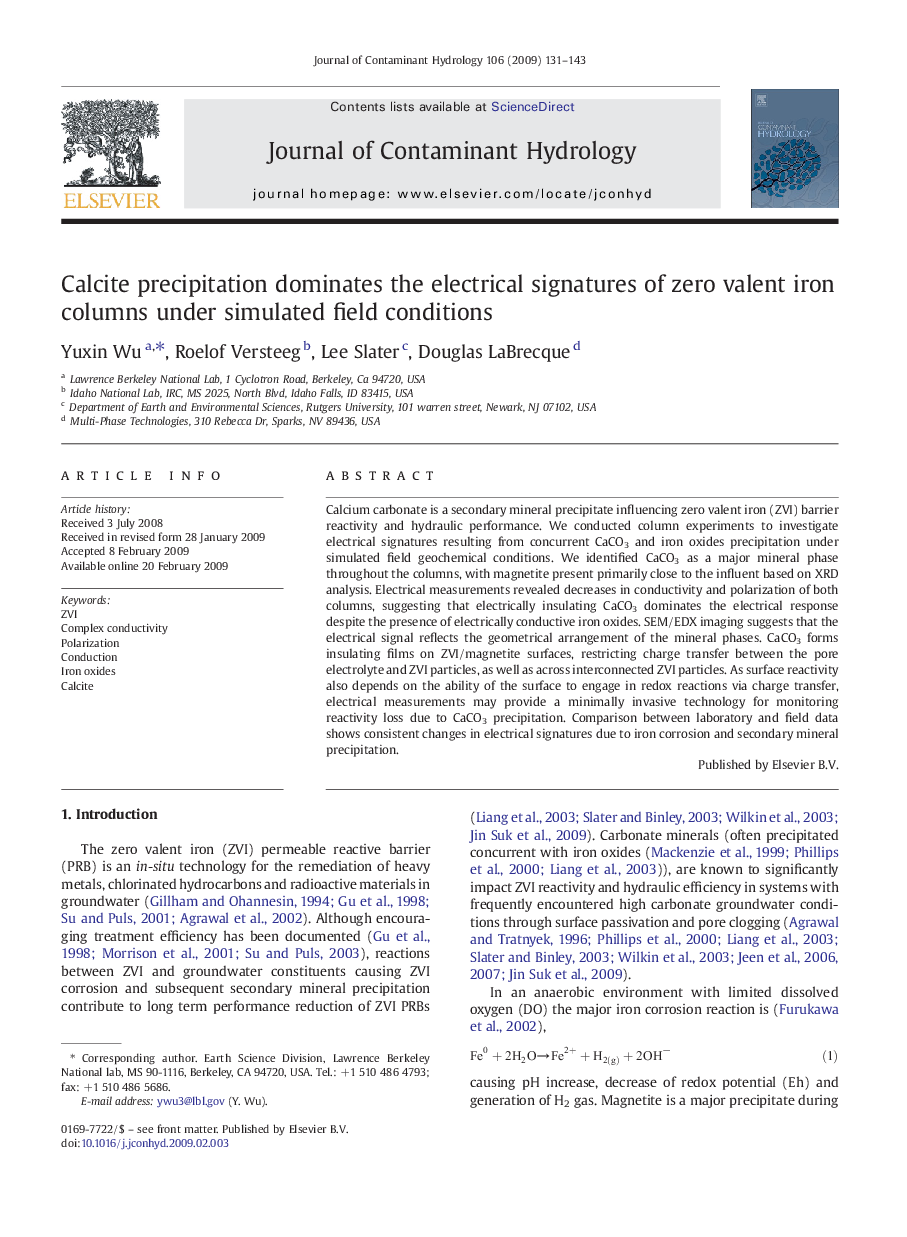| Article ID | Journal | Published Year | Pages | File Type |
|---|---|---|---|---|
| 4547194 | Journal of Contaminant Hydrology | 2009 | 13 Pages |
Calcium carbonate is a secondary mineral precipitate influencing zero valent iron (ZVI) barrier reactivity and hydraulic performance. We conducted column experiments to investigate electrical signatures resulting from concurrent CaCO3 and iron oxides precipitation under simulated field geochemical conditions. We identified CaCO3 as a major mineral phase throughout the columns, with magnetite present primarily close to the influent based on XRD analysis. Electrical measurements revealed decreases in conductivity and polarization of both columns, suggesting that electrically insulating CaCO3 dominates the electrical response despite the presence of electrically conductive iron oxides. SEM/EDX imaging suggests that the electrical signal reflects the geometrical arrangement of the mineral phases. CaCO3 forms insulating films on ZVI/magnetite surfaces, restricting charge transfer between the pore electrolyte and ZVI particles, as well as across interconnected ZVI particles. As surface reactivity also depends on the ability of the surface to engage in redox reactions via charge transfer, electrical measurements may provide a minimally invasive technology for monitoring reactivity loss due to CaCO3 precipitation. Comparison between laboratory and field data shows consistent changes in electrical signatures due to iron corrosion and secondary mineral precipitation.
